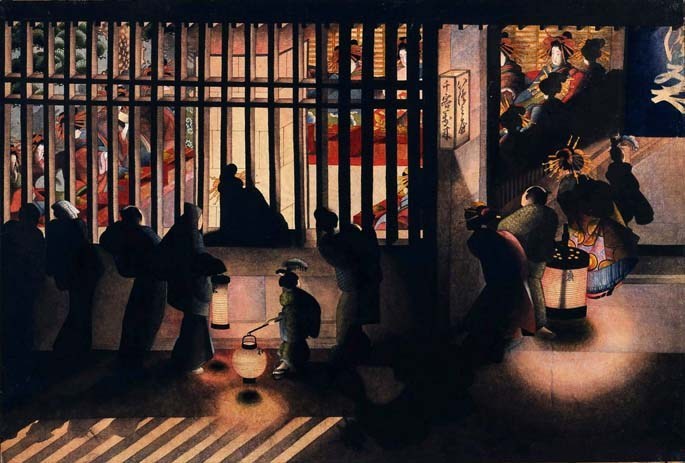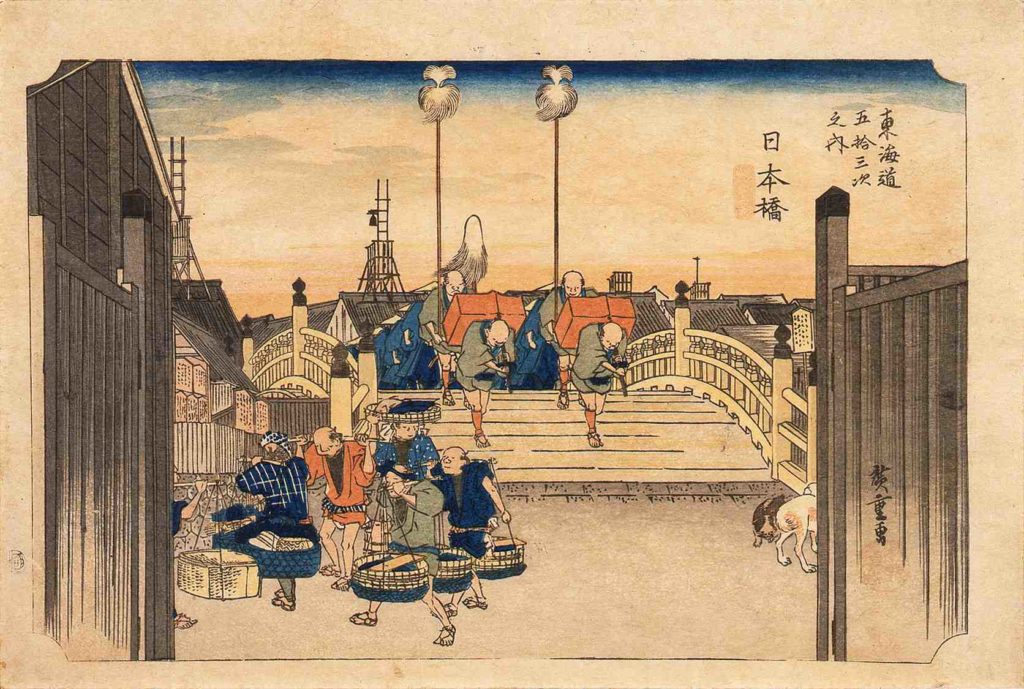by Kaori Shoji

A priority item on the agenda of the first Shogun of Japan, Tokugawa Iyeyasu when he seized power in 1603, was to limit foreign travel to Japan. He issued several orders like the ones we’re seeing around the world at this moment: urging the Japanese to stay put in their own communities and urging all foreigners to get the hell out. By foreigners, Iyeyasu specifically meant the European missionaries who were spreading ideas – like a virus! – about an omnipotent God that transcended traditional Japanese values. They also extolled the virtues of non-violence and giving to the poor; two factors that the new Shogun viewed as particularly harmful to his authority. The ‘aliens’ had to go, and those who didn’t, were eventually executed or banished to Dejima Island, off the coast of Nagasaki. Iyeyasu’s son and grandson tightened the screws on the lockdown as they in turn, became the Shogun. Japan effectively bolted its doors to the outside world and Sakoku*・鎖国(shutting down the country)’ went into effect.

Initially, other clan lords were skeptical about this sakoku thing. Before Iyeyasu came along, Japan had a fairly robust import/export system, supported by a prosperous merchant class in Osaka. Without inbound travelers and foreign business, these merchants were sunk, as was the burgeoning currency economy. But Iyeyasu shrugged off their complaints and worries. He chose reclusive isolation over commerce and progress, and for the next 265 years, Japan became a ‘hikikomori (shut-in)’ in the global community. Everything passed us by: the Industrial Revolution and the locomotive, colonialism and corsets, Mozart and coffee, the printing press and chocolate. Everything.
*Writer’s Note – Contrary to the belief that the Tokugawa Shogunate coined the term ‘sakoku’ which literally means a ‘country in chains,’ it was actually invented by German explorer Engelbert Kaempfer in the late 17th century and later translated into Japanese.
In the meantime, the Japanese got a lot of practice on keeping calm and carrying on behind closed doors, in spite of or because of everything happening in the larger world. Sure, sakoku sucked in a hundred ways but it also created a uniquely weird culture that continues to enthrall or amuse people all over the world. Iyeyasu’s capital city of Edo – now called Tokyo, was a haven of stability and prosperity with an unparalleled ecological and recycling system.
The sakoku mind-set made all this possible – a willful and deliberate closing of the shutters to the outside world while making sure that plenty went on inside. Call it aloofness, coldness or a thick-skinned pragmatism. In times like this, such traits can come in pretty handy.
You may have heard that the Japanese aren’t very expressive – well that’s just not true. The Japanese are THE LEAST expressive people in Asia which probably makes us the most rigid people on the planet. Long before this virus thing the Japanese have been wearing masks – as a prevention against all ills including a bad skin day and questionable breath. The mask was also fashionable among teenage girls, as hiding their mouths made them feel more attractive. (Kissing with masks was a real thing in the early aughts too, because many young couples deemed it erotic.) We were also adamant about washing hands, gargling and refusing to eat off communal plates.
Smiling and laughing in public, talking to strangers, physical displays of affection – these things are normal in western cultures but they’ve never taken off here unless it became a fad. Like being friendly to foreigners and embracing diversity was a fad that many Japanese felt pressured into doing because hey, globalism and the Olympics 2020. But now COVID-19 has given the Japanese a very good reason to go back to the way we were. Unrelenting, inexpressive, rigid and distanced. It’s all cool. Show me a person with a secret stash of face masks and 30 rolls of toilet paper and I’ll show you a model Japanese citizen.
As for touching one another, it’s a whole other issue unto itself. The Japanese just don’t do this, and never had. Though many of us love the idea of casual cheek kisses a la Francaise, we just couldn’t muster the courage to try it on a Tokyo street. Now, we don’t have to pretend anymore. Social distancing may be a new and scary concept for the west but to us, it’s very familiar, like our parents to whom we pay the obligatory visit over New Year’s.
Speaking of which, I don’t ever remember being hugged by my late father, who devoted much of his life to wedging a good, 1.7 meter distance between himself and the rest of the world. It wasn’t just him of course, many Japanese males can’t bring themselves to get close to anyone they know, which paradoxically explains why there’s so much groping on the trains. But the virus has resolved that snag–what with schools closed and people ordered to work remotely, the morning trains are far less crowded and consist mostly of masked salarymen clutching phones with one hand and briefcases in the other, studiously avoiding all eye and physical contact.
You might say the Japanese are good at this. There is little of the sense of deprivation and loneliness that say, an American person might feel about the loss of casual physical contact. We’re not touching, we’re not smiling, but who’s to say we’re not having fun underneath our face masks?
Editor’s Note: And judging by the hanami crowds this weekend and in accordance with the Ministry of Health’s “Let’s go outside!” admonitions, it seems like Japan’s 鎖国(sakoku ) period may end very soon.
Just for the record, while big concerts and public events are not happening, there’s still plenty going on in Tokyo and most restaurants and department stores have stayed open. Other venues include:
1) Shinjuku Gyoen Park
Located in Sendagaya, this place is heavenly for a stroll among the greenery and themed gardens.
2) Oedo Onsen Monogatari
The popular bathhouse in Odaiba is alive and doing good business, along with the fancy La Qua Spa in Tokyo Dome.
3) Tokyo Tower and Shibuya Sky
In case you want look down on the city and laugh at its petty problems.
4) Tama Zoo
The animals are fine and chilling out. We should do the same.
5) Fujikyu Highland Amusement Park
Scream your head off on the roller coasters, at least until 3PM when the place closes.
6)Brick
Most bars are open but this place in Ginza is a personal favorite, with one of the finest selection of whiskeys in Tokyo.
END
[…] by Kaori Shoji […]